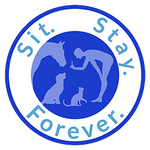Oct 13th 2021
A Step-By-Step Guide To Training Your Puppy ByChris
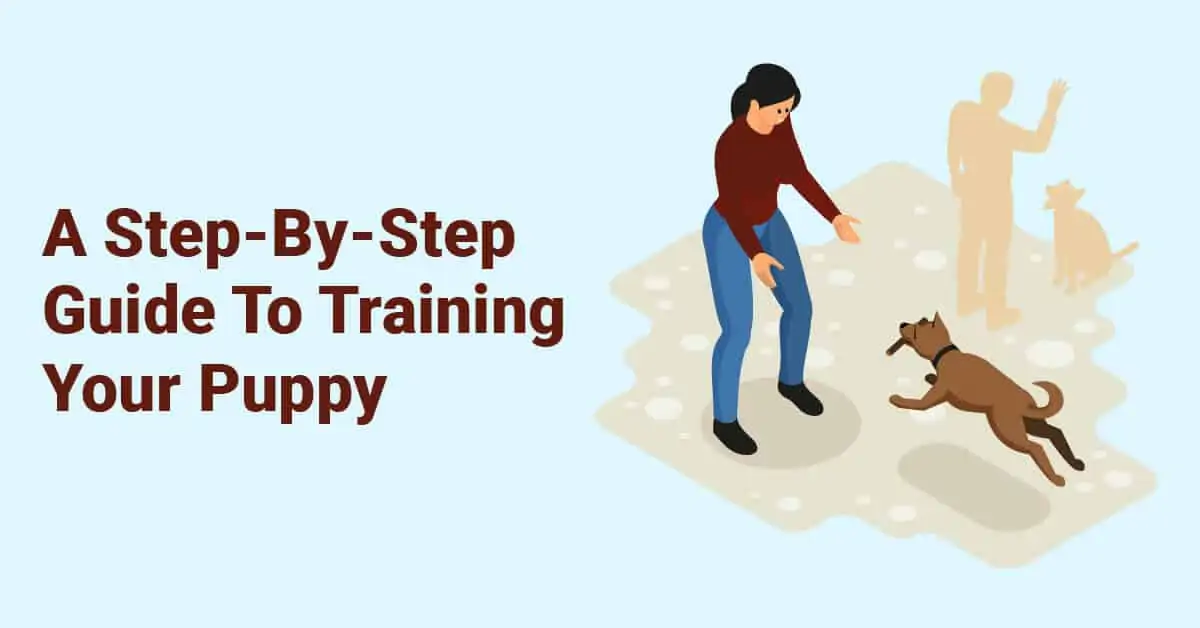
Introduction
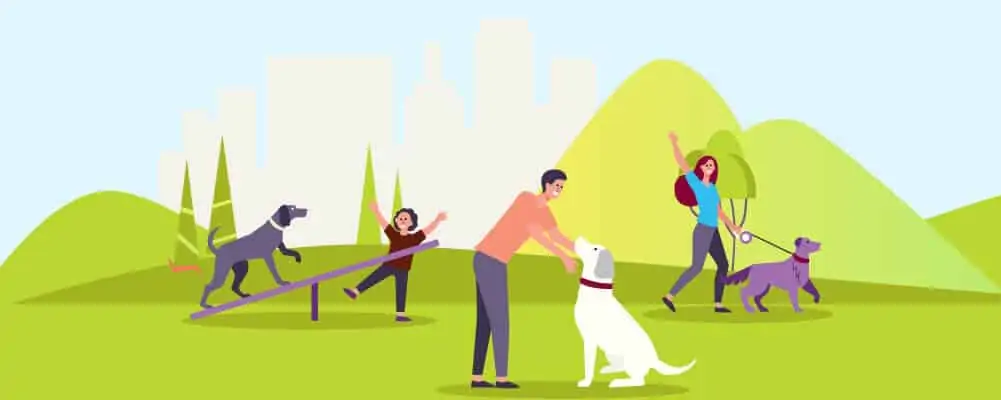 Training a puppy can get difficult, especially if you’ve never done
it before. Fortunately for us, dogs have been man’s best friend for
thousands of years, so we have some idea of how their minds work and how
we can train them effectively. Our friends over at Oodle Life sent us this great comprehensive guide on how you can train your puppy. We’ve
tackled the process in steps, so it’s easier for you to understand and
follow when training your own dog. You’ll find our guide is separated
into three parts:
Training a puppy can get difficult, especially if you’ve never done
it before. Fortunately for us, dogs have been man’s best friend for
thousands of years, so we have some idea of how their minds work and how
we can train them effectively. Our friends over at Oodle Life sent us this great comprehensive guide on how you can train your puppy. We’ve
tackled the process in steps, so it’s easier for you to understand and
follow when training your own dog. You’ll find our guide is separated
into three parts:- Getting Started With Puppy Training
- What To Train Your Puppy On
- Tips For Training Your Puppy
Those should cover everything a new dog owner wants to know about puppy training. For those who want to read even deeper into the process, we have also included some references to other online materials.
Before we get into puppy training, here are some things you should know about the process…
Table of Contents
Getting Started With Puppy Training
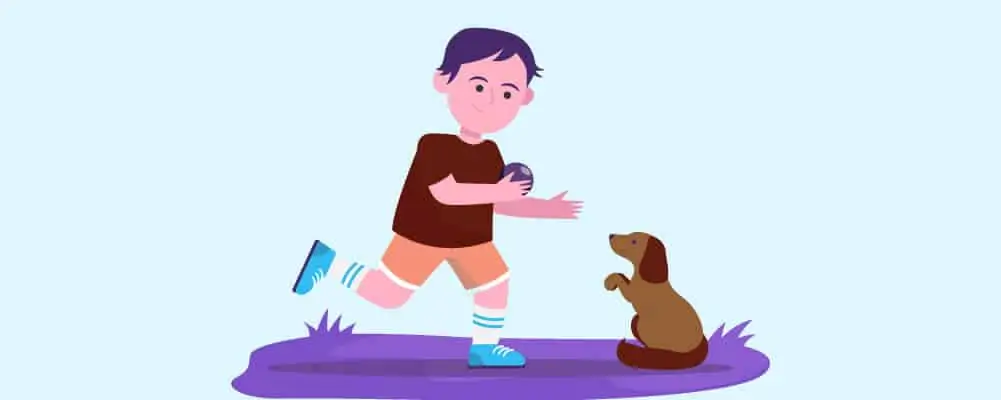
You should know some information before you start training. You can’t teach your puppy if you haven’t learned a few things yourself, after all.
First, why train your puppy? While highly domesticated, dogs are still animals that need to be trained and civilized. Every good dog owner should train their dog as a matter of principle.
As for practical reasons, training is the best way to bond with your dog so that you have a great relationship with them. Most mid and large-sized dogs, and even some of the small ones, benefit from outdoor activity. While taking your dog outdoors, they should follow heel, sit, and stay commands for the safety of the dog and others. A well-trained dog will also bark less, be less aggressive and destructive around your household, and won’t suffer from phobias.
Even the laziest dogs love training since it’s often presented as playtime, so the training process is fun for both of you!
How Do Dogs Learn?
To best teach a dog, we need to understand how they learn. Most learning, even with humans, is based on pattern recognition and copying the actions of the teacher. Dogs learn best when you appeal to their sense of sight and smell. Since you have an interest in dogs, you’ve probably heard just how powerful dog noses are.
Positive reinforcement should be used to reward the puppy when it does what you want. That way, it learns to respond to certain commands with the expectation of receiving praise for doing so. Whether it’s praise, their favorite toy, or their favorite treat, all can be used to tell your puppy they’re doing well.
Finding their favorite treats can require some detective work, so you should get to know the temperament and tastes of your new dog before training starts. The simplest way is to present them with several dog-friendly treats and see which ones they like.
Here are some extra tips on getting your dog to learn new things:
- Train them in a place that doesn’t have distractions. A quiet room away from windows and strong scents will suffice.
- Train in short, regular sessions so that the dog doesn’t get burned out.
- Be patient, dogs won’t pick things up instantly.
- End sessions with a trick that your dog does know, so the training ends on a positive note for you and the dog.
- Make it fun for both of you. That way, you’ll both keep up with the training routine and enjoy the process.
How Long Does It Take To Train Your Puppy?
Every dog is unique, that much should be obvious. This means that different puppies will have different training times. It depends on five main factors:
- How much you’ll be teaching them.
- How long you can spend training them.
- How experienced you are with dog training.
- The dog’s temperament.
- The age of the dog. We’re talking about puppies today and, fortunately for you, the youngest dogs are the easiest to train!
With that in mind, let’s go with a basic example of what your dog training journey may look like. So, let’s assume that your dog is three months old and you spend some time with them twice a day, with each session lasting for ten to twenty minutes. We’re using three months as an example because it’s where the dog is developed enough to be trained but still very young, so it’s the ideal starting age.
Assuming that schedule, you’ll spend four weeks just ensuring that your dog pays attention to you and focuses on your movements and commands. This will involve play and structured games, which you may need to learn yourself if you’ve never trained a dog before.
Now you’ve set up the foundation of your pup’s education, it’ll take another four or five weeks to build up the typical skills every dog should have. That’ll be the sit and recall commands, and the ability to walk them on a leash without incident.
Then you’ll need to proof those skills. That’s where you spend more time, another four weeks with our example, introducing your dog to new situations and making sure that it’ll focus on you and follow your commands no matter where you are.
That’s the bare minimum that every dog should learn. Proofing the dog fully can take a few extra months, in which case you should have a well-mannered dog by the time it reaches one year old.
What To Train Your Puppy On
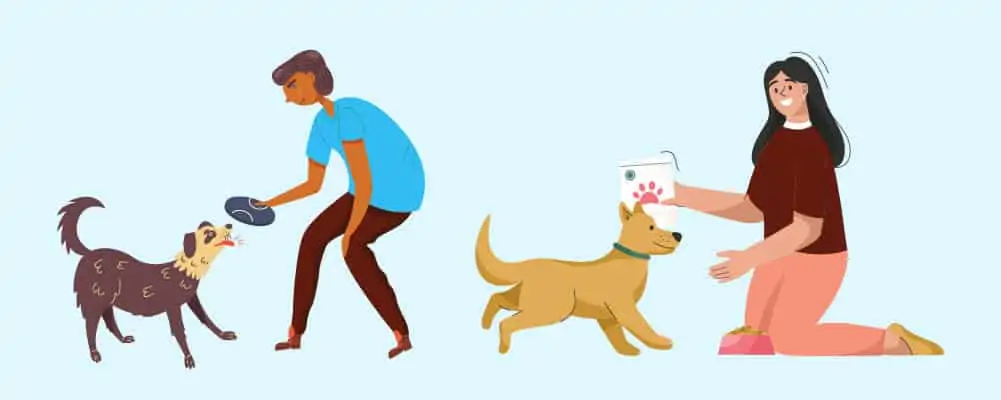
Now that you know a little more about how dogs learn and how long the training process will take, it’s time to talk about what your puppy needs to know.
Here are nine basic skills and functions that every dog should be taught. If you can think of any more, training them is easy when you use positive reinforcement.
Toilet Training
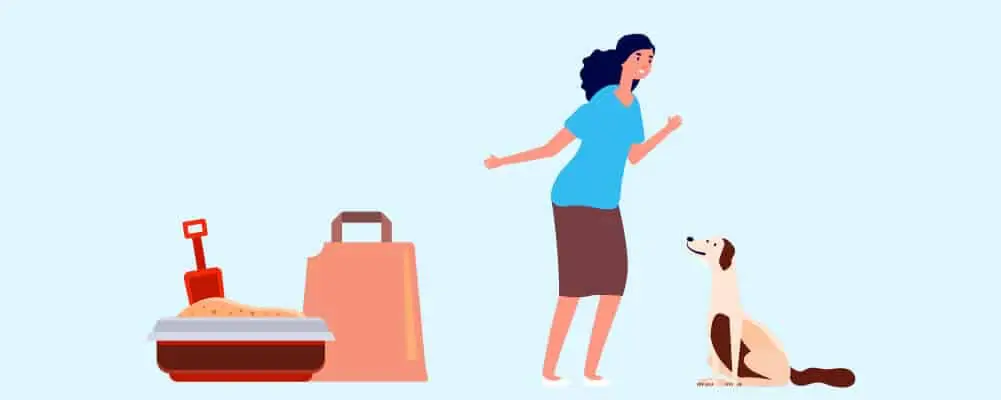
Let’s start with toilet training, a basic skill that comes in handy every single day. That makes it one of the most important, if not the most important. A puppy that doesn’t learn the house rules won’t follow them as an adult, so the problem will get worse and they’ll be much, much harder to train out of it.
What those house rules are will depend on your home and the dog. If you have a yard, then most dog owners teach them to go potty outside. For puppies, it’s common to have a pad for them to do their business inside until they get bigger. A designated pooping spot on a pad is common for those in apartments or buildings without backyards, too.
Follow these tips to toilet train your pup properly:
- Feed the pup on a schedule so that its movements can be anticipated.
- Take them out every morning and every evening, and then in one-hour intervals, or sooner if the pup is excitable. They should also be taken outside after they eat or nap.
- Encourage them to go to the same spot each time.
- Accompany them, don’t leave them to their own devices until they are older.
- Reward them when they go outside.
Lastly, and most importantly, do NOT punish a puppy when they go inside. If you catch them in the act then clap once to startle them, then take them outside and praise them once they have finished. Don’t rub their nose into anything or yell at them. Pups aren’t smart enough to figure out why you’re mad, so you’ll only teach them to fear you instead. When a dog is in fear, its movements may become uncontrollable, so you’ll only make it worse for yourself.
When a dog is trained, they’ll bark, whine, circle, and scratch at the door to signal they want to go out. Learn the signs and let them out when they want.
Crate Training
When settling a puppy into its new home, many use a crate. They are also used to keep dogs confined when the owners are out of the home and they can’t be trusted with furniture and other things in the house. This comes with its own training requirements that you should know.
To make a dog stay in its crate, they need to like it. You can’t treat the crate like a jail cell or a punishment for them, or they’ll associate it with negativity. They should love the crate instead, which is done by feeding them from the crate and giving them treats when they follow commands to enter it. When relaxing in their crate is a pleasurable experience, your pup won’t mind spending some time there.
Make sure the crate is large enough for the dog, full of food and fresh water, and unable to be defecated in. If you’re away, somebody should be on hand to let them out once a day for a break.
As you can imagine, there are ethical concerns over using your crate too much. If you’re using a crate, learn what not to do.
To Walk On A Leash
Walking is essential to maintain the fitness of dogs of all sizes. Some dogs are lazier than others and playful dogs can be harder to train because they don’t like being restricted. Your dog shouldn’t just tolerate being on a leash, they should be calm and respectful to passersby. For that, you’ll need to socialize them with both animals and humans, something we’ve covered in more detail below.
As for how you teach the dog, you should start with teaching your pet sound cues. Whether it’s a click of the tongue or a trigger word, you should use it in your quiet place to attract the dog to you while it’s wearing its collar. Reward them with a treat when they do. Continue that until the dog learns to walk beside you for a few seconds to get the treat instead.
After that, you should take it outside and introduce your pup to the natural world. They should be fully vaccinated and old enough to tackle a walk by themselves, of course. If the dog pulls, stand still and refuse to move until the puppy moves. Don’t jerk the leash around to try and control the dog. When you take the walk outside, you should be pre-emptive if the dog tries to lunge or bark at passersby by distracting them with treats beforehand.
How To Socialize With Others – Animals & Humans
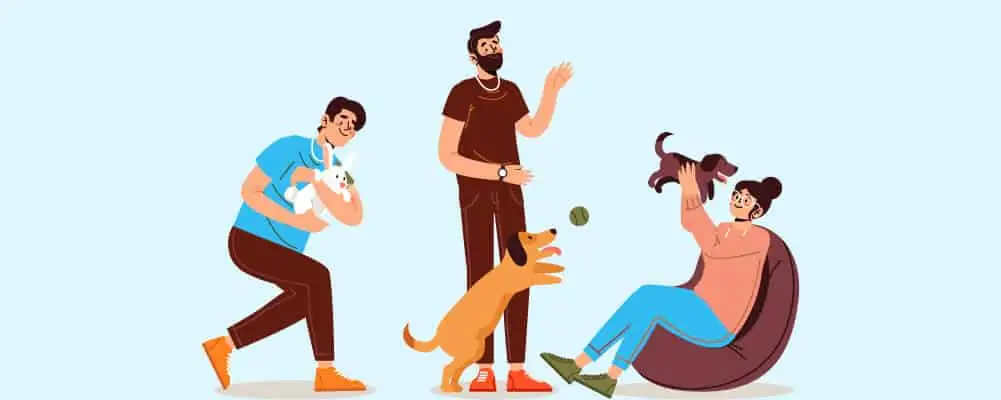
Our pets socialize with everybody else we come across, which means they need to play nice with other people and even other animals. The surest way to socialize your pup is to introduce them to different people growing up. Your family members and friends are the best people for this. Once a pup has had enough exposure to people of all stripes, they generally won’t see other people in the street as a threat.
As for animals, there are a few things you must consider. Socializing your pup to play nice with other dogs is similar to socializing them with people. You should take them to parks and other places where dogs are allowed so they can become confident and friendly while around others. This is best done with a friend who owns a dog that you know is friendly, so you can organize how the introduction takes place before taking them to the park.
Dogs aren’t the only animals that are out there. There are critters that your dog may want to play with or harm, like rabbits or squirrels, which then present an unwelcome distraction on your walks. This is especially important with dog breeds that have a high prey chase drive.
How Not To Bite
This is one of the most important things that you teach a dog. Depending on the local laws near you, a dog that bites can be confiscated and destroyed. A puppy that nips at people isn’t so serious but, if you don’t train it out of them, it can become a dog that bites. It’s best to train a dog not to bite when they have tiny teeth that have barely grown in.
When your puppy does nip, you should make a display that shows them they hurt you. Typically, you should say “ow” in a high pitch, so it sounds like a yelp from a fellow pup. When the dog responds by backing away and calming down, give them the treat to reward their compliance. Ignoring them can work too, by burying your hands in your armpits and turning away from them. Don’t chastise them, that’s just more attention, so they won’t learn.
Not To Chew On Furniture
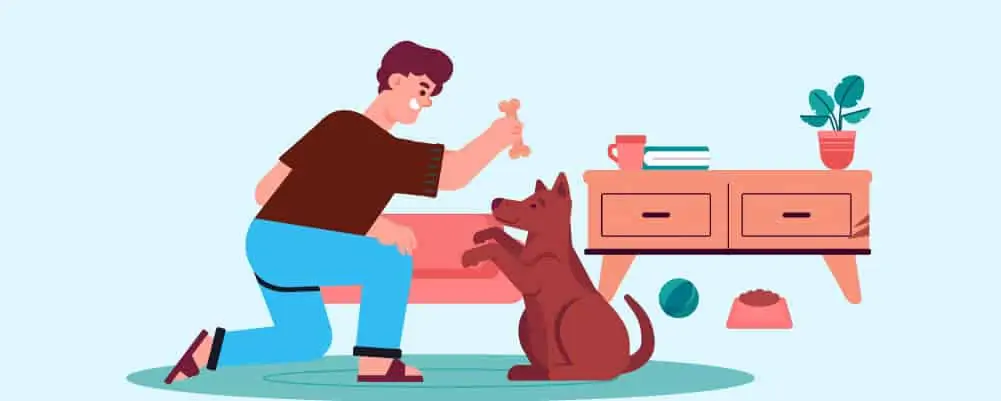
A less serious biting behavior that’s common with puppies is furniture chewing. It doesn’t just cause damage to items in your home, which can result in costly repairs or replacements, but it can also degrade the quality of your dog’s teeth if they try chewing hard surfaces. Naturally, the dog will do more damage to your furniture as they get older and their mouths and teeth get larger, so you should stop this bad habit while they are young.
First, giving your pup a chew toy is a great way to control your dog’s chewing tendencies. A chew toy, when given early, will likely become their favorite toy and so they’ll stay away from cushions or table legs. Dental chew sticks are also a great treat that allows them to chew while also regulating their dental health. Give them a purpose-made chew toy, not some old clothes or part of a furniture item, because then they’ll think it’s okay to chew similar objects.
When your dog tries chewing off-limits objects, you should follow the usual steps. First, don’t get mad and instead calmly direct your dog to the chew toy. If they take up the chew toy, pat them on the head and give them a treat as a reward.
If bad behavior persists, you can also get a no-chew spray that makes things smell and taste unpleasant for your dog.
How To Be Able To Stay At Home Alone
Getting rid of furniture chewing is part of a wider skill set, which is the ability to be left home alone. You don’t want to come home to torn cushions, after all, and there are many other benefits to teaching canine independence.
Dogs are social creatures, especially when they are young, so teaching independence can be tough. Start while you’re still around by placing them in a crate or pen, surrounded by the food they need and toys to occupy themselves with. Quietly leave the room for a minute or two and then return with a treat. Do this and gradually increase the time you’re away, rewarding them if they stay calm. Tone down how much you reward them so that they don’t miss you too much!
Teaching Your Dog Obedience & Basic Commands
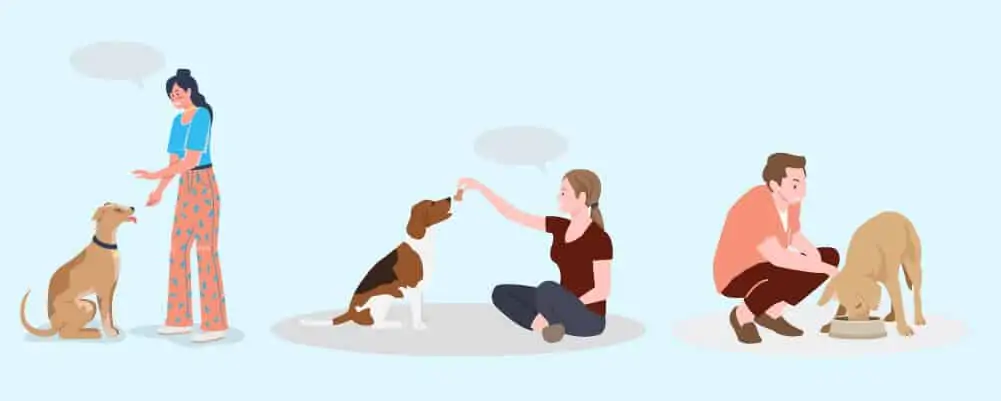
Now that you’ve covered a lot of the basics for your pup, you should then also teach obedience and the basic commands that allow you to communicate and control the animal. What basic commands does a dog need to know?
- Look – Get your dog to start focusing on you, so you can issue further commands.
- Sit – To get them to sit down, obviously.
- Stay/Wait – Stop them in their place until you return.
- Down – To get them to lay down and relax.
- Off – Not to be confused with down, this gets them to stop trying to climb onto furniture and other inappropriate things.
- Recall/Come – To make the dog come to you, which could save lives in certain situations.
- Heel – To stop your dog from pulling ahead during walks.
- Leave it/Don’t touch – To get the dog to leave or ignore things that they shouldn’t be interested in.
- Drop it – To get your dog to drop something that they should have left if they ignored you the first time!
Teaching all of these requires a calm but persistent process that involves rewarding them when they do what you want. When they don’t, simply redirect their attention instead of getting frustrated and giving them negative attention. Giving negative attention will either reinforce the bad behavior (since bad attention is still attention!) or will distress your dog and lead to even worse behaviors.
There are many other commands you can teach your dog after you’ve covered the basics, for those who want to take the training even further.
Proofing Behaviors & Troubleshooting
As we said above, you should proof all of the behaviors that you teach your dog. There isn’t much point in training your dog to follow commands if they get distracted easily. You stop that by reinforcing the commands in the real world, so your dog learns to follow them no matter what’s happening around you.
It can be difficult to know when your dog fully understands a command. You should look out for three things:
- They follow the behavior when they get the cue.
- They don’t follow the behavior if they haven’t been cued.
- They don’t follow the behavior after a different cue.
Then you need to proof the behavior, which requires three other factors:
- Distance: Can they follow commands when away from their handler?
- Distraction: Can they follow commands while ignoring distractions?
- Duration: Can they follow the behavior for an extended period?
Proofing dog behavior is all about asking yourself “what if…?”
You shouldn’t throw your dog into the deep end and expect them to swim. Instead, change just one factor at a time so you can build their obedience in a piecemeal way. If you want them to stay from a distance, add distance without adding duration or any distractions, otherwise, your dog will be overwhelmed. Once taught individually, a dog can handle all three with ease.
Use the best treats possible, better than the ones you used to teach the commands to your pup. These work best when adding distractions because they simply can’t help but pay attention to their favorite treats. When they successfully proof the behavior, be very generous with your praise and your treat-giving.
As always, be patient and manage your expectations. The dog will fail, especially when it’s a young pup, but they have already made amazing progress if you’re in the proofing stage. Go slowly and give the dog plenty of time to understand what you want from them.
An advanced way to proof your puppy’s taught behaviors is also to change its handler. A well-behaved dog that follows your orders is great but one that follows another handler’s cues is even better.
Tips For Training Your Puppy
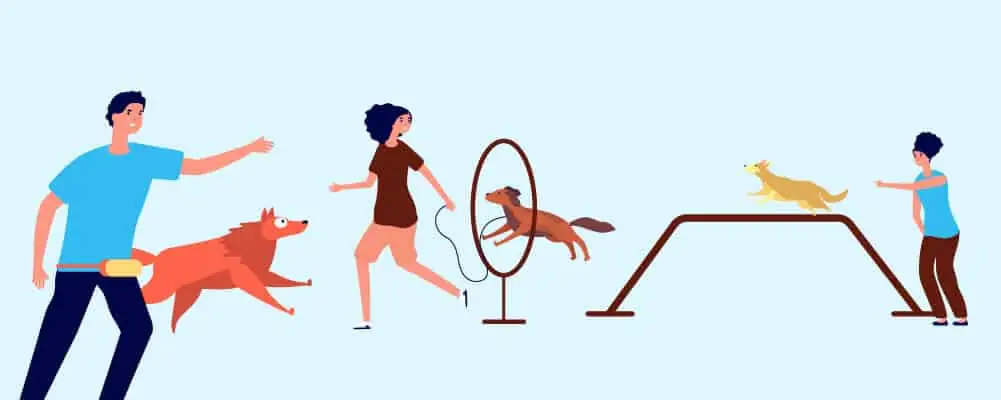
With that, we’ve covered the backbone of this guide. You should know most of what is needed to properly train your pup into a well-behaved and respectful animal.
As we near the end of the guide, let’s finish with some tips and tricks that you should always keep in mind. You should have gleaned many of them from the steps outlined above because they are fundamental to a healthy and productive training session.
Even if you teach your pup some new tricks, you can still ruin their temperament if they become emotionally troubled by missteps along the way. You can avoid that by following the five tips below.
Create A Routine
Like many animals, dogs don’t have as sophisticated a sense of time as we do. That said, they can recognize routines and memorize situations where certain behaviors are expected of them. Humans need routines to learn and be at their most productive, so it makes sense that a routine will benefit your four-legged friend.
Start training sessions at the same time every day, so your dog can anticipate and get into the habit of following your commands. It also allows you to schedule around training sessions, so even busy dog owners can find the time to raise a well-mannered dog.
Try To Start Your Training In A Quiet Environment
When you do get a training schedule started, you should also free up a quiet place where your dog can focus on you. Puppies have short attention spans, so this is something that needs to be catered for when you start training them.
If you have a backyard, make sure it’s relatively quiet and free from critters and other objects that’ll cause a distraction. If you’re training them inside your house, it should be in a quiet room that the dog is familiar with, so they don’t get the urge to explore and ignore your commands. The more familiar and peaceful the dog’s training space is, the easier it’ll be to get their attention and teach them what they need to know.
Reward Your Puppy For Performing Well
The main thing to remember when keeping your dog healthy and happy during training is that you should only use positive reinforcement. Many inexperienced dog owners will get frustrated with their dogs and try to punish them. Punishment only works when they understand why they are being punished, which they rarely do.
Even if a dog does look “guilty” after doing a forbidden action, acting negatively toward them won’t change their ways. Dogs are motivated by seeking out positives rather than avoiding negatives.
Instead, a mixture of diversion and positive reinforcement is better. Where possible, ignore the pup’s bad acts and instead divert them to what you want them to do. When they interact with areas and objects in the way you want, shower them with praise and rewards. This teaches them that, to get more rewards, they should do what you want them to do.
This ties into our next tip…
Don’t Punish Your Puppy
As we said, do not punish your puppy. You shouldn’t punish them when they grow up and become a dog, either. At most, you can startle them with a clap or some other quick but loud noise, but this serves to grab their attention instead of punishing them. Once you have their attention, you can then divert them or ignore them, to show them that their current behavior won’t get any positive treatment from you.
Some dog owners go so far into “punishing” their pup that it can become abusive. The last thing you want to do is mentally harm your dog during its most vulnerable and formative months. Dogs that have been browbeaten and otherwise mistreated will develop even worse behaviors that, as they become adults, become practically untreatable unless you get a professional dog trainer.
Know Your Puppy’s Limits
Lastly, while we’re thinking about the mental health of your pup during its development, you should know its limits. Over-training your dog can become a frustrating experience for both of you. Your pup wants to please you and feel good about doing it, but that doesn’t happen in prolonged training sessions. They stop being productive within twenty minutes, after which the chances of you both getting frustrated increase.
You’re not the only one with patience that can run short. Your puppy has patience too, which will get worn down through overlong sessions and this can harm their attention span in the future.
As we have written near the start of this guide, anywhere between ten to twenty minutes is best for a single training session. Many recommend fifteen minutes as a natural middle point between those two figures.
Summary
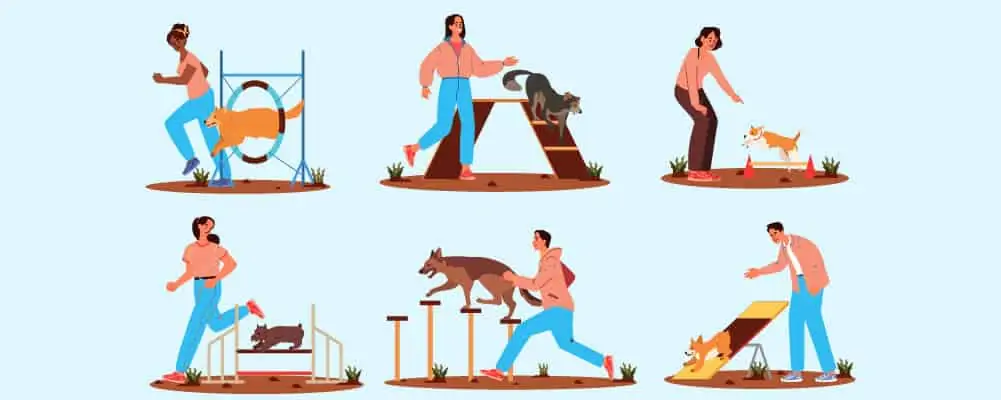
That’s the end of our guide on training your puppy. Much of the information here is suitable for dogs of all ages but, as we have detailed, the younger dogs are often the easiest to train past three months old. As they say, you can’t teach an old dog new tricks!
A lot of this guide was structured to be followed step-by-step, so keep it around the next time you’re starting the dog training process. When the information above is followed, you should see results from your dog training while also encouraging a happy and healthy relationship with your pup.
When you’re shaping the mind of a young animal, knowing what not to do is just as important as knowing what to do. Remember to treat your dog calmly and with respect, and they’ll repay you in kind by following your commands.
